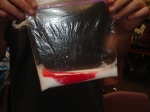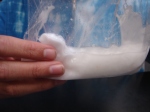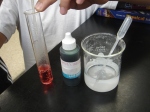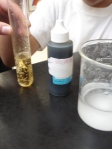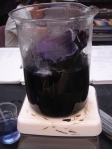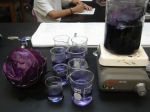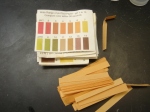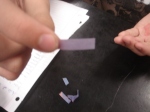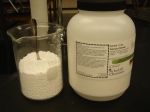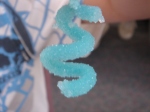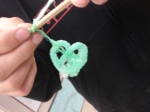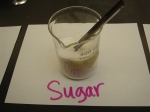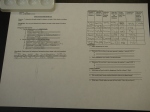Our current unit on Acids and Bases began with introduction to different types of mixtures-namely solutions, colloids, and suspensions. The first activity students were engaged in was entitled, “Scattered Light.” In this activity, students observed the properties of two mixtures- a salt/water mixture and a gelatin/water mixture to classify the mixtures as a solution or a colloid.
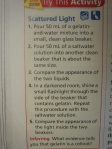 ***
*** ***
*** ***
***
KEY TERMS FOR MINI-LAB #1: Mixtures, Solution, Colloid, Solubility
In the second mini-lab, students attempted to answer the question “What makes a mixture a solution.” Therefore, students were able to apply their knowledge of the definitions of a solute, a solvent, and a mixture, a solution, a colloid, and a suspension in this activity. Students started off by filling up two dixie cups half full with water. Then, students attempted to dissolve crushed black pepper and salt to the cups, respectively. Observing how the solutes (particles-pepper or salt) dissolved in the solvent (water), students were able to conclude whether they had a suspension, a colloid, or a solution.
 ***
***
KEY TERMS FOR MINI-LAB #2: solute, solvent, mixture, solution, colloid, suspension, solubility.
In the third and last activity, students were charged to investigate whether certain substances will dissolve in water; also, students needed to analyze their data and conclude whether the physical state of matter determines whether the substance will or will not dissolve in water.
 ***
*** ***
*** ***
*** ***
***
Students used the same steps as in mini-lab #2 to investigate how well different solutes like soap flakes, vinegar, vegetable oil, table salt, sugar, and black pepper will dissolve in water. In the end, students should notice that the physical state of matter in which the substances exist do not affect its level of solubility in water.
KEY TERMS for Mini-Lab #3: solute, solvent, solubility, state of matter, liquids, and solids


















